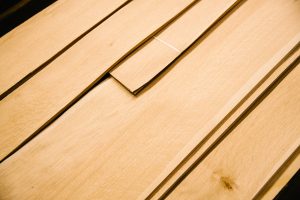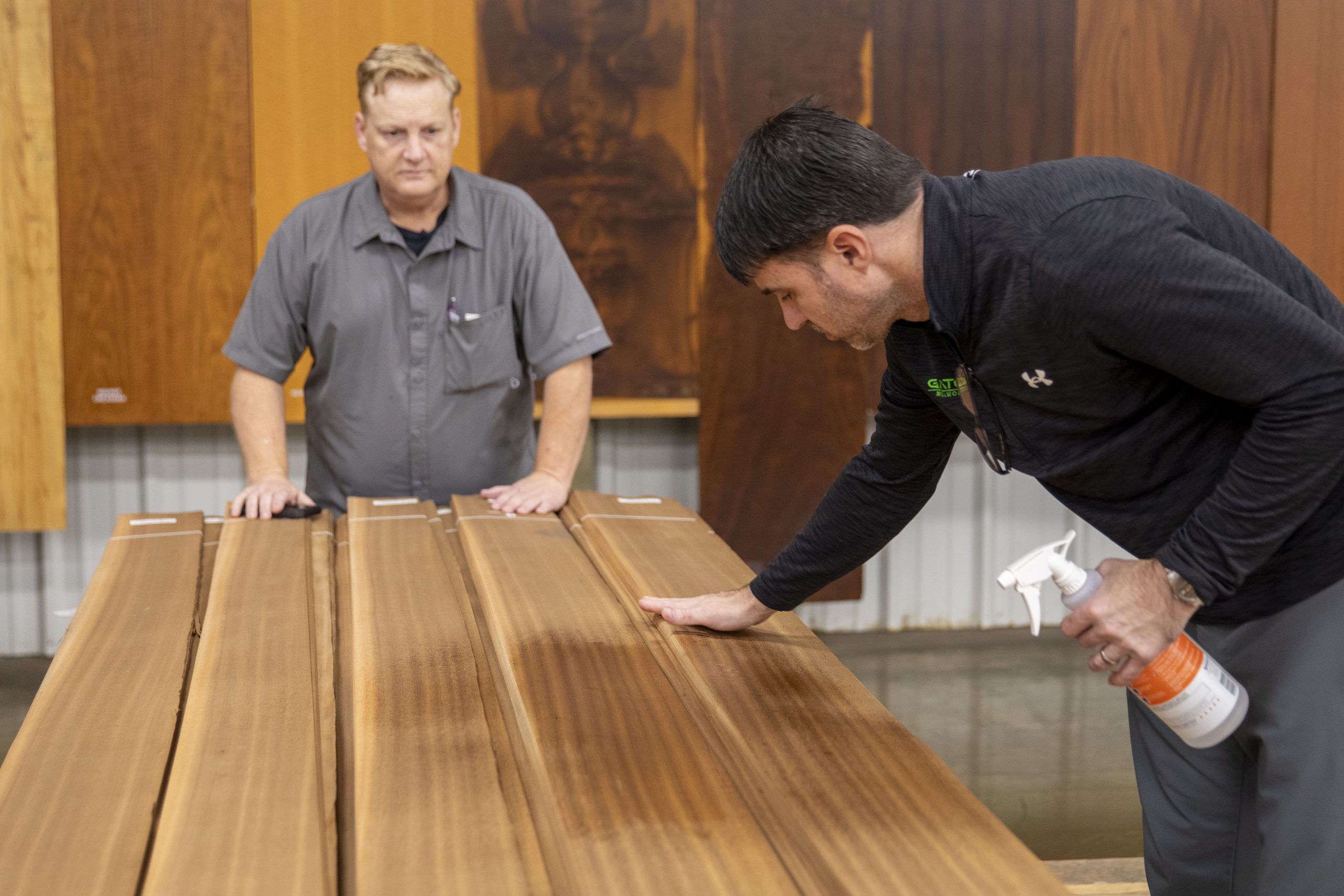
Understanding Color in Custom Wood Veneer
Color is one of the most defining features of wood veneer. It shapes how a space feels, how it interacts with light and how other materials in the design come together.
A rich walnut veneer anchors a boardroom with warmth and weight. A pale maple brightens a healthcare setting. A mix of tones turns a hotel lobby into a visual focal point.
When you are working with veneer, understanding the factors that influence color is just as important as knowing how to match grain patterns or select a species.
Sapwood and Heartwood: The Foundation of Veneer Color
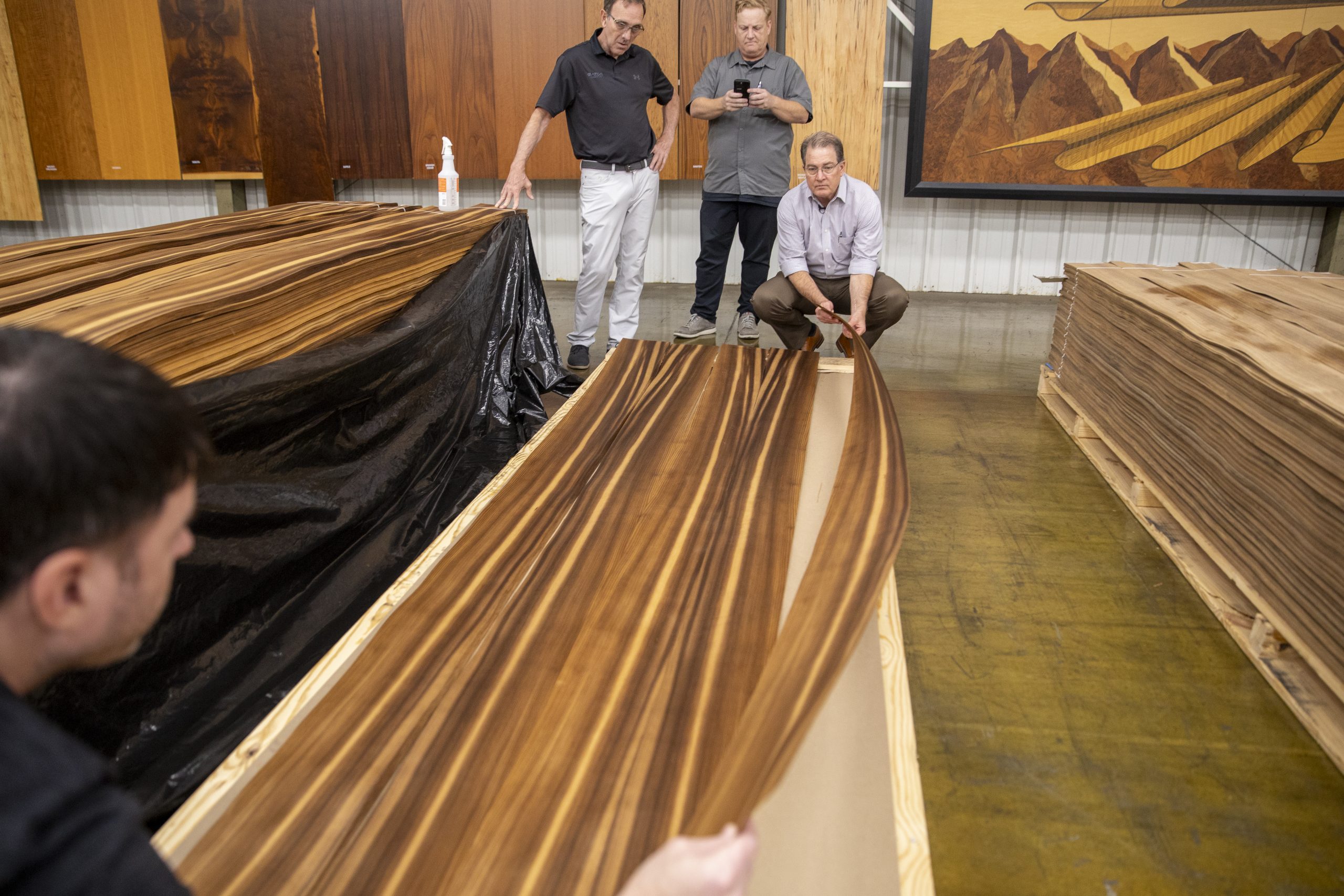 Every log has a natural division that defines its color potential. Just beneath the bark lies the sapwood. This layer is pale, often appearing almost white, because it once carried nutrients and water that fueled the tree’s growth. Its tone is soft and fresh, but it rarely matches the depth designers often want in large installations.
Every log has a natural division that defines its color potential. Just beneath the bark lies the sapwood. This layer is pale, often appearing almost white, because it once carried nutrients and water that fueled the tree’s growth. Its tone is soft and fresh, but it rarely matches the depth designers often want in large installations.
Inside the log, underneath the sapwood, lies the heartwood. Over time, this older wood darkens as natural compounds settle in its cells. Heartwood produces the richer, deeper colors that many designers and architects prize. When used together, sapwood and heartwood create natural variation within a single log, offering options that range from subtle light tones to bold dark hues.
When the logs are broken down into bundles, individual leaves or “flitches” often contain both heartwood and sapwood. Clients can decide whether to keep the sap for a dramatic contrast or clip it off for a clean, consistent tone.
How Origin and Growth Conditions Shape Color
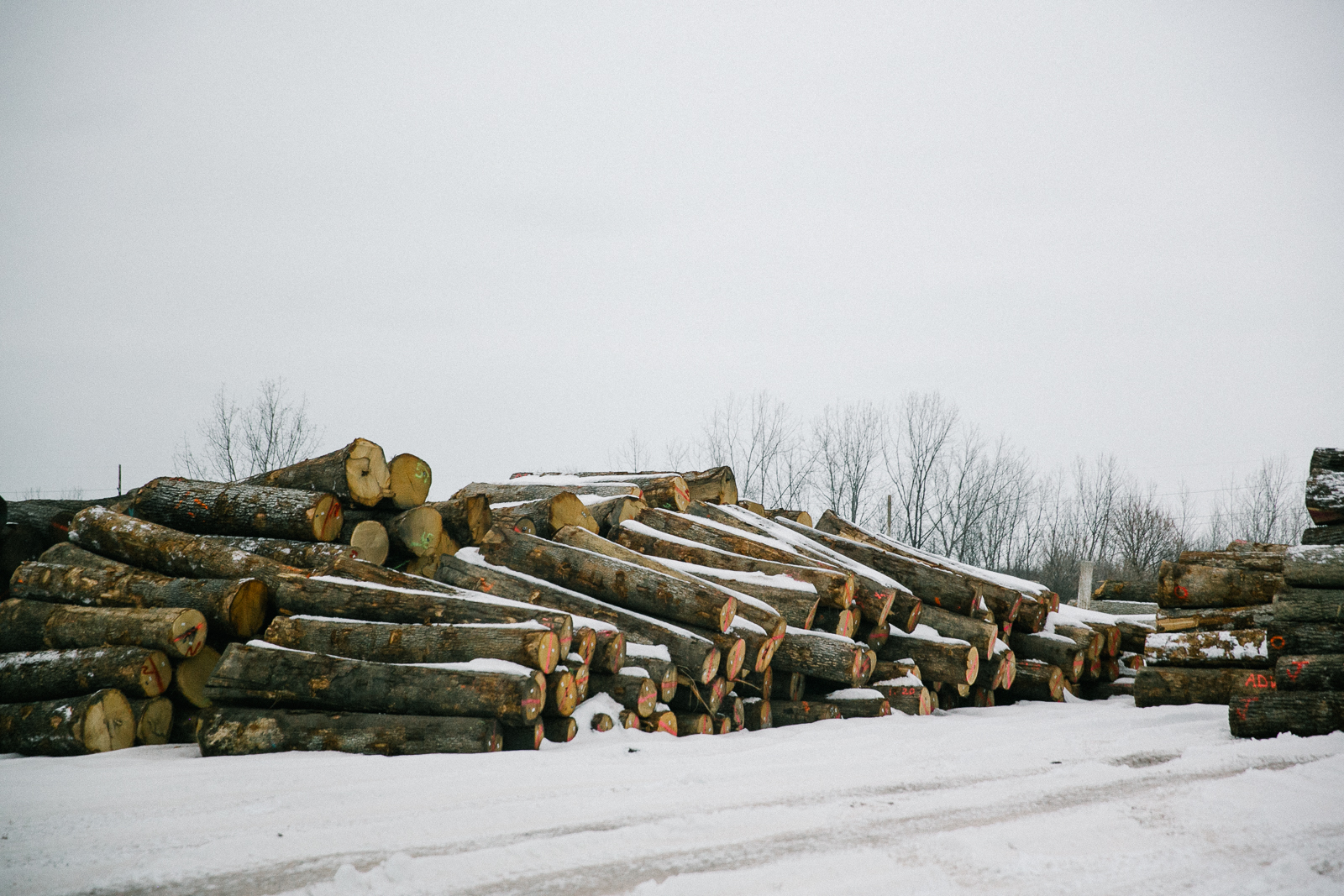 The environment where a tree grows influences veneer color as much as its anatomy. Two trees of the same species can look remarkably different depending on where they took root.
The environment where a tree grows influences veneer color as much as its anatomy. Two trees of the same species can look remarkably different depending on where they took root.
Consider these factors:
- Growth rate: A tree that grows quickly in fertile soil often has wider grain and lighter color. Slower growth tends to produce tighter grain and darker tones.
- Climate: Sunlight, rainfall and seasonal temperatures all impact how the wood develops.
- Soil and minerals: The tree absorbs what is in the ground, which can add subtle undertones of red, gold or brown.
- Elevation: Trees grown at high altitudes often display distinctive variations not found at lower levels.
Gator’s Quality Control: Managing Veneer Color at Every Step
Veneer color management begins long before installation. Our vertically integrated process allows us to control color consistency from log selection through final installation.
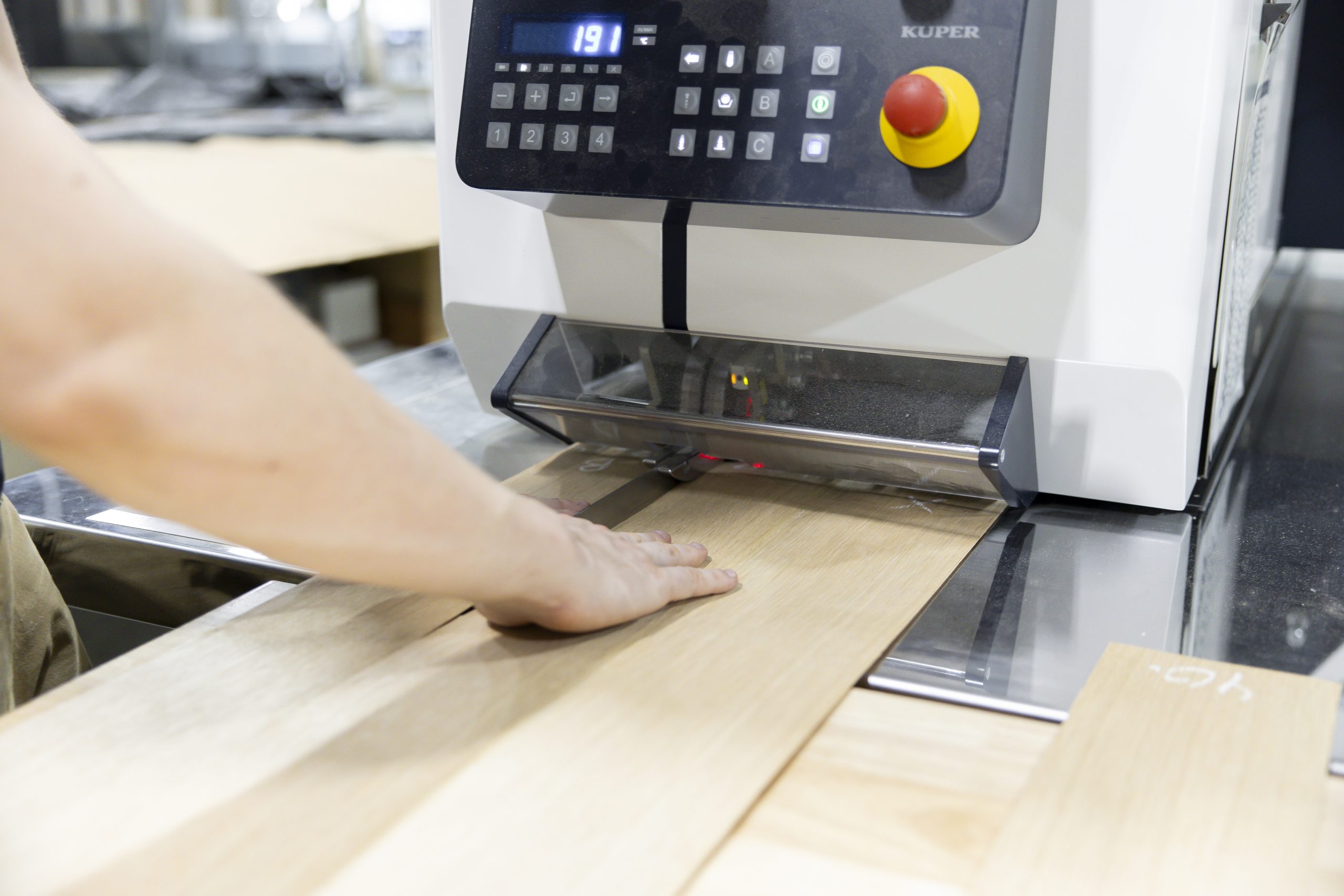 1. Veneer Selection
1. Veneer Selection
We begin with careful veneer selection through collaborating with trusted partners such as M. Bohlke Veneer—the premiere wood veneer vendor worldwide—who harvest, cut and grade both import and domestic logs. Whenever possible, we travel with clients to hand select veneer bundles for their specific projects. This firsthand review of color tone, sapwood content and grain pattern ensures the aesthetic foundation is set from the start.
2. Processing and Bundling
Once veneer flitches arrive at Gator, our team inspects, sorts, catalogs, and hand-selects each piece for the project. Every flitch is reviewed for length, width, grain pattern and orientation and then placed precisely to achieve the desired aesthetic. This attention to detail ensures consistent coloration and grain flow across panels—especially vital for large installations requiring hundreds of aligned pieces.
3. Panel Layup
In our custom veneer processing department, we clip, splice, and apply veneer in-house, maintaining complete control over design and quality. This allows us to eliminate unwanted characteristics and to pattern-match color and grain across multiple panels or casework elevations. By managing panel layup internally, we ensure the visual flow remains intentional and consistent—whether the goal is perfect uniformity or artful variation.
Application Considerations: Ensuring Color Harmony.
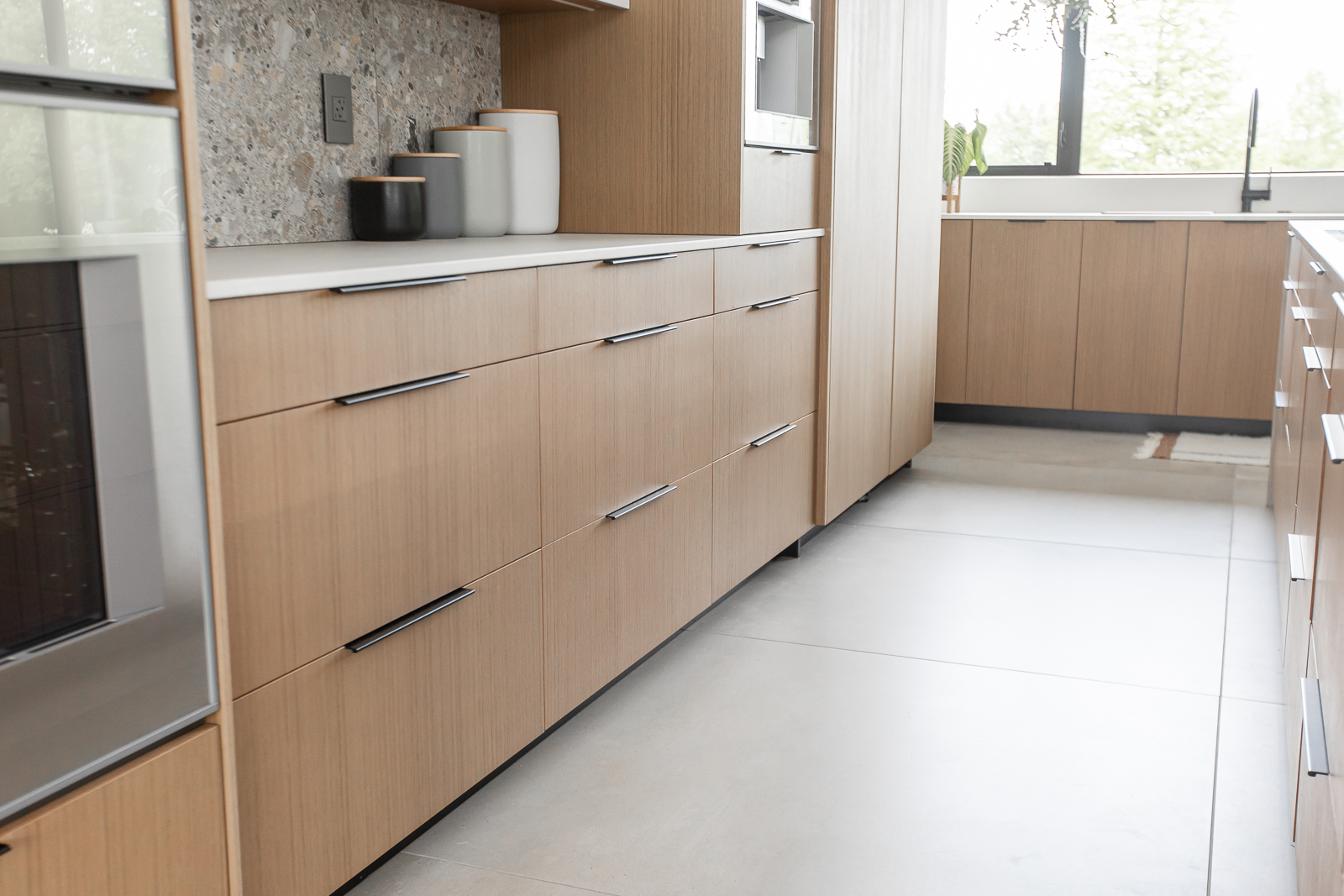 Applying veneer to panels brings color choices to life. Even with careful log selection and bundling, how the veneer is applied determines whether the finished space feels cohesive or disjointed. Three factors matter most: sequencing, bundle matching and layout.
Applying veneer to panels brings color choices to life. Even with careful log selection and bundling, how the veneer is applied determines whether the finished space feels cohesive or disjointed. Three factors matter most: sequencing, bundle matching and layout.
Sequencing: The Flow from Log to Panel
Sequencing refers to the order in which veneer leaves, or flitches, are cut and applied. Because veneers are sliced sequentially from the same log, each flitch naturally follows the grain and color pattern of the one before it.
By keeping that order intact, we maintain a smooth transition of tone and texture from panel to panel. Depending on design intent, sequencing can either enhance consistency across large areas or introduce controlled variation.
Bundle Matching: Maintaining Consistency
Matching bundles helps create visual harmony. Veneers that come from the same bundle share tone, grain and overall character because they come from the same section of the log. Keeping those pieces together helps the color balance and pattern alignment stay consistent across surfaces.
Panel Layout: How the Veneer Is Arranged
Layout refers to how veneer flitches are positioned side by side within a single panel. The two most common methods are:
- Book-matching: Alternating each sheet as if turning the pages of a book to create a mirrored grain and strong symmetry.
- Slip-matching: Placing sheets in sequence without flipping, creating a continuous flow with minimal pattern interruption.
Each layout produces a distinct look. Book-matching enhances drama and balance, while slip-matching emphasizes minimalism and uniformity. The right choice depends on the client’s desired mood and the role veneer plays in the overall design.
Partner With Gator Millworks
Gator Millworks partners with architects, designers and contractors to make veneer color decisions deliberate and effective. We manage every stage of the process from raw log selection to final installation. Because we stay involved throughout the process, our clients can expect:
- Consistent coloration across every panel.
- High-quality craftsmanship through every step.
- Design flexibility to achieve a wide range of visual effects.
Color begins in nature, but expertise turns it into design. When you view veneer color as a design tool instead of a natural variable, you unlock its full potential.
Contact Gator Millworks today to bring your next big idea to life.


